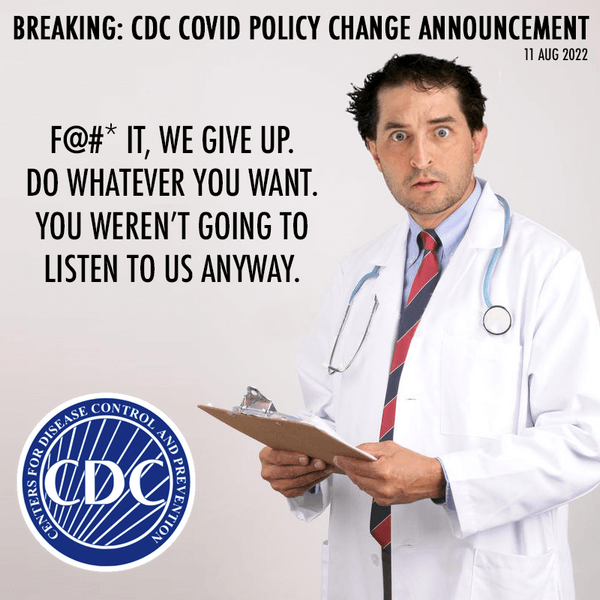
An unexpected potential exposure
I was left wondering this week, did a beach day cause a COVID exposure? Anyone who knows me understands that I like to get to the beach a few times each summer. After all, I live a couple of miles away, and it’s a shame not to enjoy the pastime that brings people here globally. I am truly fortunate to live where I do. But, as a resort area, it’s been a hotspot through the COVID pandemic. Luckily, what brings people here is, in large part, the great outdoors. With its beautiful beaches, abundant watersports, and fresh seafood, Cape Cod is the playground of celebrities, presidents, and NFL coaches.
Like you, COVID protocols have kept me lowkey for the past two years. However, I recently caught up with a friend for a day at the beach. She works in the medical field and has been cautious throughout COVID. Yet, this week I got the dreaded call that she tested positive for COVID. After getting the news, it got me thinking about this phase of the pandemic and acceptable risk.

Pandemic fatigue
People want to return to pre-pandemic normal, although we know things will never be quite the same. Here in the US, 73% of Americans are traveling this summer. That’s up 20% since last year. Expedia’s CEO predicted that this season’s travel would be the busiest. So, it’s good news for the travel industry and viruses.
The World Health Organization (WHO) published a 2020 report entitled Pandemic fatigue Reinvigorating the public to prevent COVID-19. Scientists understood the natural progression of human nature. Yet, you can’t keep people locked down forever. In my latest blog, Is Working From Home A Business Risk, I talked about the future of work and how no workplace takes the place of family, friends, or our private lives.
Additionally, I contemplated Malcolm Gladwell’s The Diary of a CEO podcast and the assertion that “sitting home in your pajamas” is not a healthy existence. We agree that humans are social animals and must interact to maintain homeostasis. As resilience professionals, we must consider this as we continue monitoring COVID rates and assessing business risk.

CDC embraces pandemic fatigue
Being human, we are all subject to pandemic fatigue. In an interview, Dr. Meg Cary says, “COVID fatigue, fundamentally, is the natural response to prolonged, all-encompassing stress that demands our emotional, cognitive, physical, and spiritual energy. If you think about it, everyone’s been under enormous pressure for over two years. Many of you are on teams, like me, that continue to assess employees’ safe return to the office or exposures if they have returned. Often, you are addressing diverse settings–hybrid schedules, reinstated travel, and desire for large-scale gatherings.
Risk assessments on this scale are a safety person’s nightmare. Their role is to keep personnel safe while enabling business operations. Likely, people feel the bottled-up pressure of two years of COVID protocols. The Centers for Disease Control (CDC) updated its guidance this Thursday. So, the CDC relaxed its restrictive community controls, the most significant jump forward to an endemic phase yet. And it resonated with what I had personally experienced when even my most careful friend put herself in situations that could endanger herself. Thus, her exposure.

Do we throw our hands up in defeat?
So, I contemplated my situation and wondered did a beach day cause a COVID exposure. It made me wonder, had I hit my limits? Have we collectively reached our maximum ability to comply with controls in the face of deescalating risk? Or, at least, perceived risk for most of us. Maybe the endemic announcement is around the corner. I think many people hope so.
However, in a professional capacity, we must weigh the cost-benefit against the safety of our employees, customers, and business partners. It’s a no-brainer that safety should win out. However, even careful people appear fed up. Plus, there’s business pressure to return to business as usual (BAU). My recommendation is to take a balanced approach. Country and local regulations provide a foundation, but leadership decision-making provides strategic direction.

It comes down to acceptable risk
Exposures are going to happen. So, it is up to you/your team to make recommendations that support the overall resilience of the organization. A large portion of acceptable risk is industry based. Then, factor in the identified risk factors that could negatively affect BAU or hinder profitability. Finally, it’s a mix of what leadership decides is the best path forward, often mixed with employee and customer sentiment.
It’s our job in resilience to provide a clear picture of the risk exposure. So, determining acceptable risks by examining profitability targets against potential risk impacts. A zero-risk environment is impractical. Anyway, achieving zero risk is nearly impossible considering the costs of doing business and secondary hazards.
That leaves us with the sometimes uncomfortable middle ground of embracing acceptable risk. To do this for your organization, I suggest you map examples or scenarios to help clarify what meets the thresholds of acceptable risk for your organization. This exercise helps explain the approach so that leaders can take a unified approach.

Go to the beach, choose acceptable risk
Now, the next big question is when COVID reaches the endemic stage. Going into the Fall, a surge in exposure is likely, especially in the northern hemisphere, as the weather cools. The New York Times’ Coronovirus Briefing Newsletter predicted increased COVID rates last spring. And pandemic waves are expected. We have to access who benefits from continued vigilance.
Of course, the most vulnerable need protection. Yet, there’s a push to return to normalcy in the business world. It’s challenging to retain and protect resilience against workplace and individual pressures. Significantly some scientists are predicting that the endemic phase is two years away. So, to protect against exposure and mitigate impacts, the way forward appears to be a path of sustained acceptable risk.
